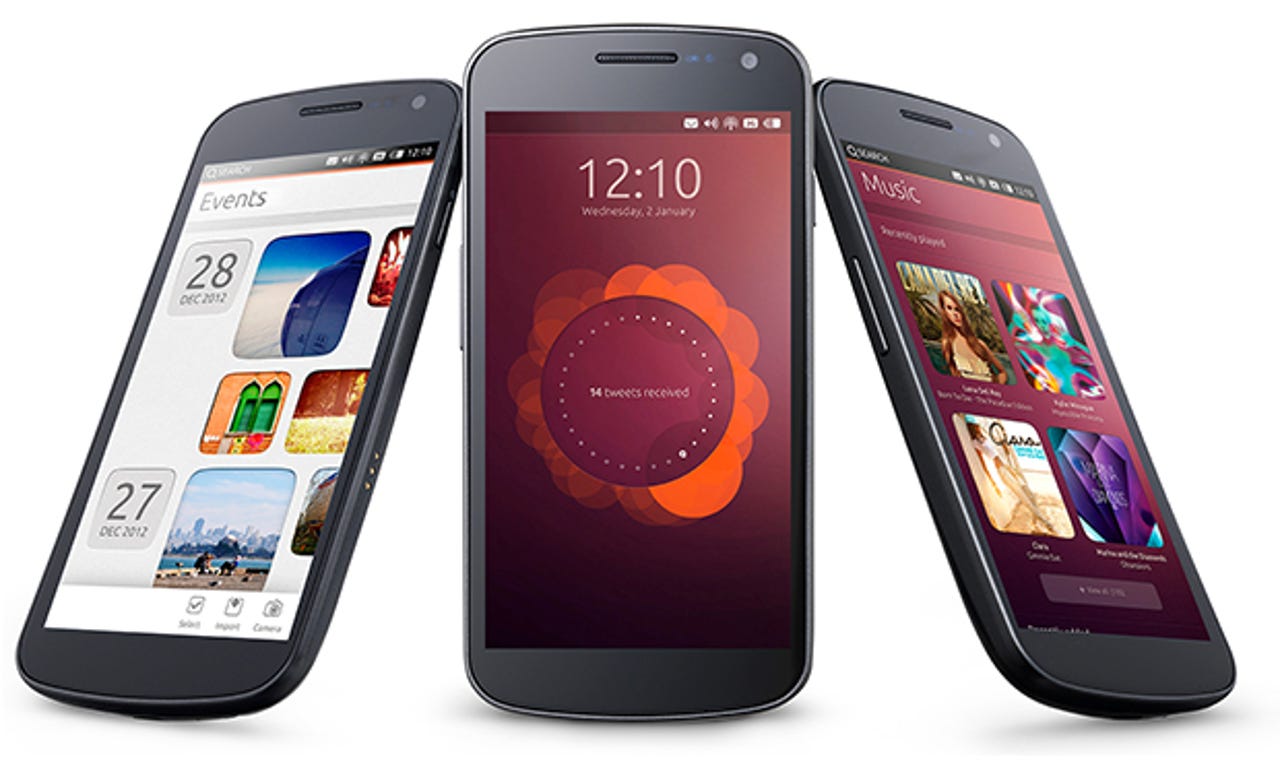Ubuntu Touch First Take: OS convergence comes into focus


As a concept, the convergence of operating systems for different types of devices into a single code base seems like a good idea — providing it can be achieved without compromising the user experience on any one, or all, of those devices. With the release of Ubuntu Touch Developer Preview, the technical capabilities described for the crowdfunded Ubuntu Edge 'superphone' and the release of a beta SDK, Canonical's plans to reach convergence without compromise are starting to cystallise.
The Touch Developer Preview demonstrates much of the eventual look and feel to be expected in the fully converged Ubuntu 14.04, while the Edge shows how a phone might double as the basis of a desktop system. The Ubuntu SDK Preview, which is scheduled to see a full release version 1.0 in October, provides developers with the tools to create new mobile applications for Ubuntu running on a phone or tablet — either native with QML, or as HTML5 web apps. The SDK includes templates for Ubuntu application development.
Ubuntu for TV, Android, Phones
Canonical has kicked off various Ubuntu development initiatives in recent years: Ubuntu TV for televisions was originally announced in 2012 as a variant of Ubuntu 12.04; Ubuntu for Android, also announced in 2012, is a version of Ubuntu intended to coexist with Android; Ubuntu Touch, for touchscreen tablets and smartphones, is the most recent initiative. Although Canonical may have originally thought of these as separate projects, they are all scheduled to come together next year in Ubuntu 14.04 (a Long Term Support, or LTS, release), and from then on will be referred to simply as Ubuntu.
Touch on smartphones
If you're acquainted with any recent version of Ubuntu running the Unity shell on the desktop, you'll find Ubuntu Touch running on a smartphone, with its gesture controls based on the four edges of the display, instantly familiar — even in its current preview state.
Touch initially displays a Welcome screen with a central message area. A narrow status bar appears across the top of the display, much as it does on the current Ubuntu desktop. Status indicators for messages, audio, wi-fi, mobile service, battery and time are shown on the left of this bar and can be expanded by a top-to-bottom swipe. A general search feature can be launched from an icon on the left end of this status bar.
Ubuntu Edge roundup
A left-to-right swipe from the left edge brings up the launcher bar, which appears on the left edge with its pinned applications. Tapping the Ubuntu symbol on the launcher (currently placed on the bottom of the launcher bar rather than on the top as it is on the desktop) brings up a sequence of Home screens grouped by function — Music, People, Apps and Videos — rather like the lenses in Dash on the desktop. A right-to-left flick from the right edge of the display cycles through these screens and any open applications. Swiping up from the bottom edge reveals a toolbar that's specific to any active application.
As the Ubuntu Edge project shows, a phone running Ubuntu and connected to a desktop display and keyboard can operate as a desktop workstation. When docked like this, all the phone functions are fully working and easily available. If a phone call is received, for example, a status indicator appears on the desktop display; clicking on that indicator opens a phone dialogue panel — you can also open the phone dialogue from the desktop status bar and place calls.
Here's Canonical's Jono Bacon demonstrating Ubuntu Touch running on a Galaxy Nexus phone:
Included applications
Touch includes a small collection of core apps for demonstration purposes: Browser, Phone, Notes, Camera, Calendar, Calculator, Weather and Clock. Browser is the most fully developed of these apps — for now, the rest deliver minimal functionality. An ever-growing list of further apps, both complete and in progress, appears on the Ubuntu Wiki Touch Collection web page.
On 7 August, Ubuntu announced the second Ubuntu App Showdown contest. The contest runs for six weeks and encourages developers to use the Ubuntu SDK to develop new Touch applications. Winners receive an LG Nexus 4 phone running Ubuntu Touch with their application preinstalled, and may have their app included in the default Ubuntu install image.
Touch on Tablets
Ubuntu Touch running on a tablet behaves as you'd expect — much like it does running on a phone, but without some phone-specific functions.
Just like Touch on a phone, the user interacts with the operating system through swipe gestures inwards from the four edges of the display. Unlike on a phone, though, the Welcome screen includes a multi-user log-in. Phone applications or utility-type apps that don't need a lot of screen space run in 'side stage' mode, displayed on the right-hand third of the screen (assuming the tablet is orientated in landscape mode), allowing other running tablet applications to multi-task in the remaining two-thirds of the display. This means you can tweet while watching a movie, or take Skype calls while working on a document.
Thin client
In an enterprise environment, Ubuntu Touch allows a phone or a tablet to operate as a thin client with access to Windows apps over standard protocols from Microsoft, Citrix, VMware and Wyse. Such clients can be managed just as other Ubuntu devices are, via Landscape.
Installing Touch
Installation instructions for Ubuntu Touch Developer Preview are available on the Ubuntu Wiki Install page for Ubuntu Touch; a list of currently supported devices, and of work in progress, can be found on the Devices page.
Connectivity with Mobile Hi-definition Link
Until quite recently phones (and tablets) have only needed to support the native resolution of their built-in displays. For the Samsung Galaxy S4 smartphone, for example, that is 1,080 by 1,920 pixels; for the proposed Ubuntu Edge it's 720 by 1,280.
But in 2010 Nokia, Samsung, Silicon Image, Sony and Toshiba together founded the MHL Consortium; version 1.0 of the MHL specification was released in June 2010, and the first MHL-supporting products reached the market in May 2011. MHL is primarily intended to provide connectivity between a mobile phone and a TV.
MHL provides some flexibility in supporting the resolution native to an externally connected display. It uses a single cable with a five-pin interface, utilising established connectors and can support up to 1080p HD video and 7.1 digital audio, while simultaneously providing power to the mobile device. Although the simplest connection is to an MHL-compliant television, a standard HDMI connection can be achieved through an adaptor.
The Digital Living Network Alliance (DLNA) was founded by Sony in 2003 with much the same aims as MHL; DLNA-certified devices use Universal Plug and Play (UPnP) protocols for media management, discovery and control. For some tablets, running DLNA UPnP over wi-fi may be the only connectivity option.